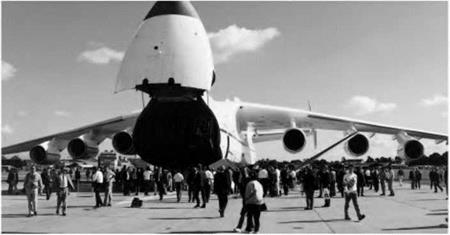Weight
There is one particular force that we are all familiar with; it is known as the force due to gravity. We all know that any object placed near the earth is attracted towards it. What is perhaps less well known is that this is a mutual attraction like magnetism. The earth is attracted towards the object with just as great a force as the object is attracted towards the earth.
All objects are mutually attracted towards each other. The force depends on the masses of the two bodies and the distance between them, and is given by the expression:
Gm, m,
F =—— LJ.
d2
where G is a constant which has the value 6.67 X ICG11 N m2/kg2, m1 and іщ are the masses of the two objects, and d is the distance between them. Using the above formula you can easily calculate the force of attraction between two one kilogram masses placed one metre apart. You will see that it is very small. If one of the masses is the earth, however, the force of attraction becomes large, and it is this force that we call the force of gravity. In most practical problems in aeronautics, the objects that we consider will be on or relatively close to the surface of the earth, so the distance d is constant, and as the mass of the earth is also constant, we can reduce the formula above to a simpler one:
F = m X g
|
|
Fig 1A Weight and thrust The massive Antonov An-255 Mriya, with a maximum take-off weight of 5886 kN (600 tonnes). The six Soloviev D – 18T turbofans deliver a total maximum thrust of 1377 kN.
where m is the mass of the object and g is a constant called the gravity constant which takes account of the mass of the earth and its radius. It has the value 9.81 m/s2 in the SI system, or 32 ft/s2 in the Imperial or Federal systems.
The force in the above expression is what we know as weight. Weight is the force with which an object is attracted towards the centre of the earth. In fact g is not really a constant because the earth is not an exact sphere, and large chunks of very dense rock near the surface can cause the force of attraction to increase slightly locally. For most practical aeronautical calculations we can ignore such niceties. We cannot, however, use this simple formula once we start looking at spacecraft or high-altitude missiles.
Weight is an example of what is known as a body force. Body forces unlike mechanical forces have no visible direct means of application. Other examples of body forces are electrostatic and electromagnetic forces.
When an aircraft is in steady level flight, there are two vertical forces acting on it, as shown in Fig. 1.3. There is an externally applied force, the lift force provided by the air flowing over the wing, and a body force, the weight.












